#My Best Guide
Explore tagged Tumblr posts
Text

I'll give them shelter like you've done for me
#my art#jujutsu kaisen#jjk#jjk fanart#jujutsu kaisen fanart#megumi fushiguro#yuji itadori#itafushi#jjk spoilers#jjk manga spoilers#jjk leaks#jjk art#fushiguro tsumiki#took all afternoon but we wrangled the colours in2 submission#it was looking very green and kind of muddy#so i toned down the saturation in a bunch of places pulled in a lot more grey#kept a lot of the shadows Hard#i think it works#not sure it's the absolute best it cld be but i am Satisfied with it#overall i ws just kind of worried that it was looking rly similar to past pieces colour-wise#i think it kind of still Is but not as much as it would have been had i not made those edits#anyway. emo hours#ive been listening to jubyphonic's piano arr of shelter and thinking abt megumi#thinking abt him growing up n looking back on himself n seeing himself in tht lonely little boy#'it's a long way forward so trust in me' smth smth finding the strength to guide that kid forward even though both of u are scared#bc at the end of the day u Are still that kid#inner child stuff usually doesnt resonate much with me bc i don't like who i was/am/whatever this aint abt me#but in regards to megumi????? OW#in lighter news i remembered at the absolute last minute to lob off the top of yuuji's ear#bc that injury at least i think he keeps ghfssdfhfgsj
6K notes
·
View notes
Text

greenhouse scene from @r0b0s-robos's A Botanist's Guide to Not Falling in Love :')
#guys go read their fic-- its so lovely#really really wanted to draw this scene#turned out slightly more sinister looking than i intended but i guess that's just what happens when the robots end up in my hands#biblically inaccurate kudzu vines#i did my best tho :')#my art#a botanist's guide to not falling in love#a botanist's guide#moon fnaf#fnaf moon#moondrop#fnaf dca#daycare attendant#fnaf daycare attendant#dca fandom#dca fanart
1K notes
·
View notes
Text


much like my friend castiel, i too disappear for periods of time, only to return a bit later acting slightly odd & with generally less skills than when you last saw me
#I THINK THIS IS OKAY?! YEAH?! OKAY!!!!#everyone say thank you to my best friend#1. just generally bc he deserves it#2. us sharing his castiel only rewatch reminded me of how much i love this son of a bitch. so he was born#3. he always helps me with my drafts<3 art critic & guide of the year everyone clap for him ty#my art#spn#supernatural#castiel#spn art#spn fanart#supernatural fanart#castiel fanart#castiel art#supernatural art
509 notes
·
View notes
Text
Fantasy Guide to the Army

I have been asked to do this post for quite a long while and I finally got around to it. This guide is a basic guide, you may need to do further research into specific armies across the world. Armies are a necessary part to any world building, so what do we need to know about them?
(PS I had planned to include air force and navy but I am just one person and I cut myself, and the read more link, some slack)
Ranks
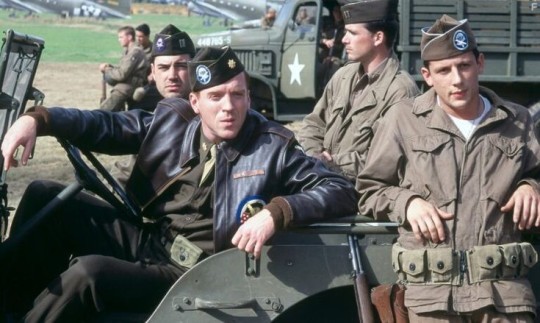
Field Marshal (FM) The Field Marshal is the highest rank of within the Army. The rank of Field Marshal was often granted in times of war (a general must have committed an act of valour, i.e. a victory). The rank can sometimes be used as a divisional command rank or brigade command. The UK, Austria-Hungary, Afghanistan, Germany, India, and Pakistan use the rank as a reward for achievement. Spain and Mexico use it for divisional command while countries such as Portugal, France and Brazil for use it for brigade command. The rank of Field Marshal is a "five star" position. The rank does not exist in the US army. They are addressed as Field Marshal Surname. Their insignia is two crossed batons surrounded by yellow leaves set under a crown.
General (Gen.) A General is the commanding officer of an army or army corps. It is currently the highest rank granted in most armies today, it is a 4 star position. A General is in charge of commanding large units, they are in charge of making strategic decisions for the army, oversee major military operations, manage the needs of the army. They are addressed as General Surname. Their insignia is four stars (US, France, Germany, Russia) and a sword and baton crossed under a crown and a star (UK). Lieutenant General (Lt.Gen) Lieutenant General commands an army corps or a division (tens of thousands of soldiers). They are also involved in strategic planning. They also hold positions within the Ministry of Defence/Equivalents. They would often serve as advisers to the government and aid Generals. It is a 3 star position and they addressed as Lieutenant General Surname. Their insignia is three stars (US, Germany, France, Russia) and a crossed sword and baton under a crown (UK)
Major General (Maj.Gen) Major General is a general officer in the army, responsible for leading and operational roles. They would command divisions of tens of thousands of soldiers. They support the officers above them, helping with strategy, executing the strategy, oversee the training of their units. They are addressed as Major General Surname. They are a 2 star position. Their insignia is a crossed sword and baton with a star (UK) and two stars (US, Germany, Russia, France). Brigadier General (Brig.Gen) Brigadier General is a one-star general officer in the army. They command brigades (3,000 to 5,000 soldiers), assisting Major Generals in tactical planning and coordination of operations. They are addressed as Brigadier General Surname. Their insignia is one star (Russia, Germany, US,), two silver stars (France) and s crown and three stars (for the UK, stars are known as pips). Colonel (Col) Colonels command brigades of about (3,000 to 5,000 soldiers), they are senior staff officers who both provide leadership to their units which are sometimes specialised agencies, such as task forces. Colonels are addressed as Colonel Surname. A silver eagle (US), a pair of diamond pips under a crown (UK), three silver pips upon shoulder braid with silver braid (Germany), three gold pips on a shoulder board with golden braid (France and Russia). Major (Maj) Majors command units of around 120 officers. They are in charge of the training and welfare of their soldiers, administrative duties within the barracks and within their unit. They are the primary staff officer in brigades. They assist superior officers in planning and executing missions and tactical plans. The Major is referred to as Major Surname. Their insignia is 2 gold stars on a shoulder board with golden braid (Russia, France) 2 silver pips on a shoulder board with silver braid (Germany), a crown (UK), a golden oak leaf (US)
Captain (Cpt) Captains lead companies usually around 50-200 soldiers. They are often the second officer in a company working alongside a superior officer. They are responsible for operations in the field such as ensuring equipment is kept up to date and in good condition, offering logistic support, and managing their troops. Captains are addressed as Captain Surname. Their insignia is two silver bars (US), three pips (UK), three silver pips on a shoulder board with silver braid (Germany), three golden pips on a shoulder board with gold braid (France, Russia) Lieutenant (Lt) Lieutenants command a platoon (about 30 odd soldiers). They are in charge of overseeing the training and discipline of their soldiers along with ensuring their welfare. They will participate in missions under the command of a superior. Lieutenants are addressed as Lieutenant Surname. Their insignia is two golden stars on a shoulder board with gold braid (Russia, France), two silver pips on a shoulder board with silver braid (Germany), two pips (UK), one silver bar (US) Second Lieutenant (2/Lt) The Second Lieutenant leads smaller units, working with enlisted soldiers. They are crucial in the training of soldiers, they maintaining personnel records and manage the resources needed for a mission or the units welfare. They would be addressed in conversation as Lieutenant but referred to as Second Lieutenant in dispatches and in correspondence. Their insignia is one gold bar (US), one pip (UK), one silver pip on a shoulder board with silver braid (Germany), one gold pip on a shoulder board with gold braid (Russia, France)
Enlisted Men
Warrant Officer 1st Class (1/WO)This is the most senior non-commissioned rank. They focus on discipline, prisoners, ammunition supplies and various technical and non-combatant services. In the UK, they often hold the rank of Regimental Sergeant Majors (RSMs) and are appointed by the Secretary of State Defence while in the US, the Secretary of the Army appoints them. They are addressed as Mr/Ms/Mrs Surname or Chief. Their insignia is one silver bar and a black square (US), the royal coat of arms (UK), four silver pips on a shoulder board with silver braid (Germany), three gold chevrons and a gold star (France), two gold stars on a shoulder board with golden braid (Russia) Warrant Officer 2nd Class (2/WO) The Warrant Officer Second Class would do similar jobs as the WO1, but they handle the below regimental section. Warrant Officer Class 1 (WO1). WO2s can be referred to as Company Sergeant Majors (CSMs) or Squadron Sergeant Majors (SSMs) (depending on their unit). They take roles within training, discipline and aiding the Warrant Officer Class 1 (WO1). Addressed as CSMs/SSMs and as Mr./Mrs/Ms. Their insignia is one gold star on a shoulder board with gold braid (Russia), Three golden chevrons (France), three silver pips on a shoulder board with silver braid (Germany), crown (UK), silver bar with two squares (US). Sergeant (Sgt)The Sergeant are responsible for the soldiers under their command. They oversee their team, acting as mentors and supervisors to their soldiers. Sergeants are over a squad of 10 soldiers. They are responsible them, from performance, prepare them for combat and their needs. They are addressed as Sergeant Surname. Their insignia is three chevrons (US, UK), two silver pips on a shoulder board with silver pips (Germany), two golden chevrons (France) and three golden chevrons (Russia). Corporal (Cpl)Corporals lead small squads of soldiers, no more than . Corporals are in charge of the training of their soldiers and ensuring that they are up to standard. They handle all the paperwork for their squad such as records. Corporals will accompany their soldiers on missions, leading patrols and overseeing their soldiers in the field. They are usually responsible for large pieces of equipment. They are addressed as Corporal Surname. Their insignia two chevrons (US, UK), one silver pips with shoulder board with a silver braid (Germany), two gold chevron (France, Russia). Lance Corporal (L.Cpl)Lance Corporals help Corporals lead their teams, acting as their second in command. They are in charge of disciplining, mentoring and leading their squads. They are also in charge of large weapons. They are addressed as Lance Corporal Surname. Their insignia one golden chevron (Russia, France), none/one silver pip (Germany), one chevron (UK) and one chevron with crossed rifles (US) Private (Pte)Privates are the lowest rank in the army. They will have just come out of training with the basic skills of a soldier. Privates are given tasks by superior officers, must obey the orders given and are usually given the more hands-on tasks, such as maintenance of weapons and their camp. They are addressed as Private Surname. Their insignia is one chevron/none (US), no insignia (UK, France, Russia, Germany).
Non-Commissioned Officers vs Commissioned Officers
You may have often heard the term "non-commissioned officer" if you have ever watched any war media. The difference is that Commissioned Officers receive their rank via a formal document signed by a high-ranking official, such as the monarch or a political leader. The Commissioned Officers are usually Lieutenants, Colonels, Generals, Captains, Majors. They are responsible for giving orders and making decisions. Non-Commissioned Officers are promoted from the enlisted ranks, gaining their promotion on skills alone. They are in charge of discipline, training and carrying out orders. They are usually ranked among Corporals and Sergeants.
Jobs within the Army

No army is just made up of officers and their soldiers. An army is like a town on the move, there are hundreds of different tasks that must be undertaken to ensure the army is fed, transported, kept in line and kept equipped.
Medic: Medics are the first responders for wounded soldiers, they administer first aid, medication and medical care to the soldiers in their unit. Medics are usually NCOs.
Chaplain: Is a soldier with some religious or spiritual calling that administers last rites, confession, spiritual guidance and solace for soldiers. They will see to soldiers of all creeds and faiths.
Artillery Crew: The Artillery Crew handle the maintenance and inventory of artillery weapons and related equipment. NCOs with training in the handling of artillery.
Military Police: The Military Police are force within the army that keep soldiers in line, maintain order and arrest any soldier caught doing a crime on the job. Always NCOs.
Intelligence: This is the information post, which involves fact gathering, recording and study of information needed by the army to mobilise.
Quartermaster: The quartermaster manages the distribution and gathering of all the things needed for the army from uniforms to equipment for the soldier's packs. Usually NCOs.
Mess Officer: The Mess Officer oversees the Mess Hall, managing the staff as they cook and prepare the army's meals. The Mess Officer would also be in charge of budgeting, inventory, health and safety and providing meals timely. Usually an officer, Captains and Lieutenants.
Adjutant: Is an officer who acts as an assistance to a superior officer taking on secretarial duties such as paperwork and arranging their diary. Usually a Captain or a Major.
Combat Engineer: The Combat Engineer is in charge of maintaining and building fortifications. NCOs with specialised skills in the field.
Logistics: Logistic Specialists handle the supplies, equipment and arranging transportation. NCOs.
Armourer: The armourer is in charge of weapons and ammunition. They handle any repairs needed and see to the safe storing of these valuable items. NCOs.
Communications Specialist: These Specialists handle communications, the communication equipment and its maintenance. NCOs usually with previous experience or training.
Mechanics: Mechanics are in charge of the maintenance of vehicles and machinery. They handle repairs, do check ups, offer support in the field and ensure everything is in good shape. NCOs with training and skills in the area.
Equipment

The soldiers will not be going into any situation without equipment - at least, not at first. Equipment is like gold dust in the field, especially if a unit is within enemy territory or the supply chain cannot be relied upon. Soldiers may often turn to thievery in order to resupply themselves with ammunition, weapons, supplies and even boots. In WWII, the newly formed company the Special Air Service - the SAS - actually raided their allies for supplies.
The soldier would carry essential supplies when they are first deployed. These would include (may vary):
Flasks/Canteen: Or some sort of drinking container. A soldier will need to hydrate if they don't wish to die-dydrate on a long march. They may also carry water purification chemicals such as iodine.
First Aid Kits: All soldiers will carry the basics of a first aid kit. This would include bandages, gauze, burn ointment, tourniquet, pain relief (not the good stuff), scissors and tweezers.
Knife: It is always handy to have something to cut things with.
Gun Cleaning Tools: Soldiers will have the equipment to care for their weapons. An uncared for weapon is an invitation for death.
Ammunition: A soldier would carry ammunition with them.
Entrenching Equipment: Something to dig with, usually a collapsible shovel.
Rations: Soldiers may often carry some sort of food with them, usually of the preserved kind.
Some form of shelter: Soldiers may carry something to shelter themselves such as a sleeping bag, a tent, a blanket.
Signal Mirror: Soldiers carry signal mirrors to send visual signals to communicate with others.
Toiletries: Basic hygiene items.
Weaponry

Soldiers will not only just need equipment to survive on the field. Soldiers will carry all sorts of weapons on them. It was up to the soldier to care for the weapon and ensure it is up to scratch. Ammunition, of course, doesn’t grow on trees and nor do weapons. Weapons and ammunition like supply I mentioned above could often be “liberated” from the enemy or even unwitting allies. Every soldier will carry:
A rifle: This is the long-range weapon carried by almost all soldiers. They will use this in combat, especially if fighting from a fixed position.
A handgun or a pistol: Most soldiers will carry a secondary gun. These guns are useful in tight spaces or close combat.
Bayonet: A knife or blade that is attached to the rifle. This allows a soldier to stab the enemy with their rifle.
Combat Knife: A knife used in combat.
Mortar: This is a short-barrelled artillery piece. It is used to fire shells at steep angles.
Hand Grenades: These are handheld explosives carried by soldiers. They have a delayed fuse, meaning that they are useful as both a long-range weapon and as a close-range weapon – one could leave one behind as a present. They are typically activated by pulling the pin, flinging it away from the body, toward the enemy and denoted.
Uniforms

Above in rankings, we went through the insignia which is the symbols on one's uniform that denotes your rank and place in the hierarchy of things. Soldiers will be inspected every day to ensure their uniforms are up to standard and will face the wrath of superiors if their uniforms are unkempt and their appearance not up to the mark. Every private learns how to shine their own boots, sort out their own uniforms and are responsible for looking their best. There are different kinds of uniform for a soldier.
Casual Uniform: This uniform is comprised of a more casual uniform, made up of a tunic/shirt, trousers and boots. Certain units will wear caps and berets denoting their unit and rank as well. Combat Uniform: This is worn on the field. It will often reflect the climate the soldier is going into, so will be light and heavy depending on the weather. A soldier would wear a combat jacket, trousers, wear a helmet, wear their identification tags/dog tags. These would be in mute colours, usually khaki or camouflage. Service Dress Uniform: This is worn during official duties and formal events. It comprises of a dress shirt, tie, peaked cap/beret, creased trousers and a jacket with their insignia, unit symbols and medals. Dress Uniform: This is worn during very formal ceremonies. A formal jacket pinned with ribbons, embroidered insignia and the medals of their achievements and commendations, creased trousers, dress shirt and tie, polished shoes and a formal hat cap/beret.
Life of a soldier (On Base and in the Field)
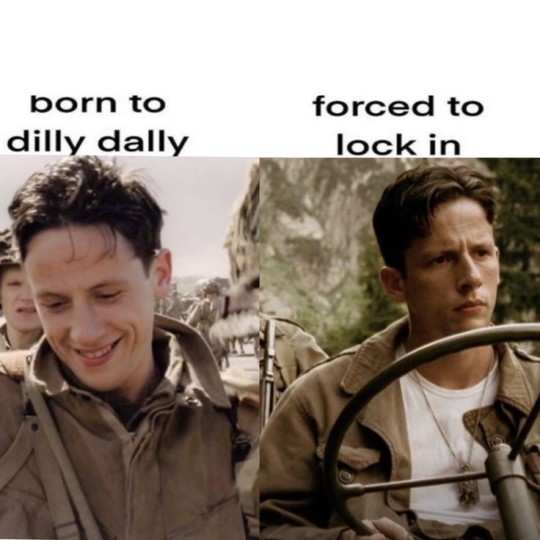
Soldiers on active duty will be expected to manage many tasks, not just firing at the enemy or storming enemy beaches. Soldiers are expected to fulfil maintenance work, defence, offence, administrative duties (if needed), engineering and communications.
On Base: A soldier’s day will be planned right down to the second. They will get up at a certain time, have an allotted time to get ready and tidy up their bunk, report to various drills and participate and have a list of duties to undertake within the day. These duties involve maintenance on base, helping with any office work, guarding and patrolling, doing specialised tasks such as helping in the infirmary. Most privates will do the grunt work, anything hands on or labour intensive while officers will see to training soldiers or paperwork or supply management.
In the Field: The life of a soldier in the field wasn’t as regimented as on base – it can’t be, since most soldiers won’t have the exact same day especially in battle or marching from place to place. But every soldier will have certain duties to undertake. Of course, fighting will be included, some soldiers would take it in shifts to man a fixed position or to engage the enemy or to participate in missions into new or enemy territory. Soldiers would take their place “out on the line”, patrolling the edges of their camp to ensure they can’t be crept up on. Soldiers will erect camp every night they aren’t marching which includes the putting up of tents, digging of latrine pits, building fortifications. Soldiers not out on the line or engaging the enemy will spend their time at camp either helping in the mess hall, in the infirmary or keeping the camp ship-shape. Soldiers may often be sent out to “forage” (*cough, cough* steal) whatever they need such as food.
The Realities of the Army
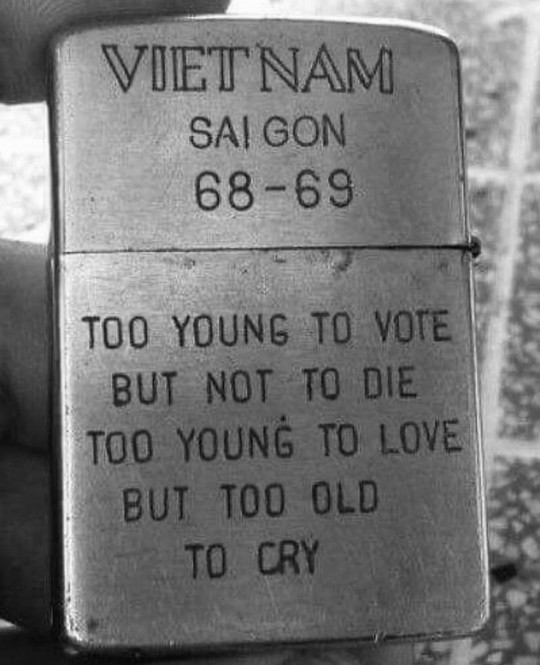
Good vs Evil. Yes, sometimes the army are the heroes. But in reality, war is a grey area. No army in the world is wholly bad or innocent. Every single army on earth has committed war crimes and every army has had to make decisions which some would find morally reprehensible. The point is that painting an army as the good guys or the bad guys in your narrative can’t work because it isn’t realistic. You can of course highlight these issues by the actions of a few soldiers while still retaining the antagonists and the heroes. You can of course pit the ideals of both sides in a war together, to firmly push your reader toward the good guys vs the bad guys. But the reality is a simple one: all armies kill, all armies steal and all armies destroy.
Civilian vs Soldier: The Reality Civilians suffer at the hands of their own army as well as the enemy. Civilians often had to deal with soldiers taking their crops, livestock and overtaking their homes in searches for food, shelter and resources. Enemy civilians would also put up with pillaging, looting and in some cases death, assault and sexual abuse. It is of course against protocol to harm civilians but things do happen in theatres of war.
The Army vs the Soldier
While the army expects a lot out of the soldier as an induvial, the army can often fall short of their duties to that soldier. This can be unintentional, for example supplies can get lost or stolen. But there are instances where soldiers and their needs are sacrificed for the greater good. They maybe passed over for supplies or reinforcements for another unit. They may be placed in difficult circumstances without any hope of relief. They may not have the equipment needed to fight their battle or stay alive. Sometimes, armies even shot their own soldiers for insubordination, ex. In WW1, many soldiers on all sides were shot by their own for “cowardice” – this may have been the case, but some cases involved soldiers who were suffering from PTSD.
Choice vs Obligation vs Threat Why do soldiers fight? What makes somebody join the army? Sometimes it is the search of opportunity, of a place, of rank and a purpose. But sometimes, going to war isn’t the choice of the soldier. Drafts and conscription make military service compulsory for certain age groups and genders. In peacetime, soldiers are enlisted voluntarily in most armies while some countries have compulsory service time even in times of peace. In some wars, criminals in prison were offered the chance to serve in the war as penance for their crimes. There are of course instances when one is threatened or forced into an armed force.
The Effects of War on the Soldier War changes people. The things soldiers see and have to do within war and training will inevitably change them as people. Sometimes, the change is positive, the army has been named by many people as the thing that straightened them out and have them structure. The army sometimes allows soldiers to travel and gain access to opportunities and education that they may never have had access to before. But undeniably, war has negatives effects on soldiers and civilians. Soldiers may suffer from PTSD, depression, suicidal thoughts and feel a disconnect between themselves and their old lives. Soldiers often find it hard to return to their life after the war, especially in radically different settings with people who don’t understand what they have been through. This can lead to substance abuse issues, alcoholism, problems with the law and troubles within relationships among family and romantic partners. Soldiers of course can get injuries while in war or even in training. Loss of limbs, damage to the brain and other organs, broken bones, burns, shrapnel injuries and of course gunshot wounds are all common. Soldiers often get ill while in the field, such illnesses including typhoid, hypothermia, trench foot, dysentery, malaria, pneumonia etc. These are caused by the close living quarters and the often-sub-standard living conditions. Soldiers would often be at risk for pests such as lice and fleas because of their living conditions. Soldiers may often face problems with nutrition, might suffer from dehydration and starvation especially if supplies are scarce.
The Geneva Convention
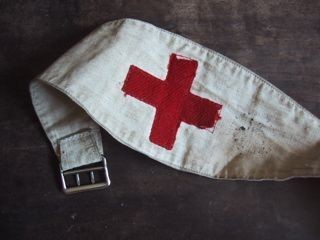
Your world may not include the Geneva Convention, may pre-date the Geneva Convention or Geneva may not be a place within your WIP, but I include this here so you might have a fair idea about the “rules” of modern warfare. This is just a brief version.
Medical personnel are not to be specifically targeted in operations.
Medical facilities and equipment is not be targeted in operations
Any wounded soldiers or civilians are to be treated, despite allegiance.
Prisoners cannot be tortured or harmed in any way
Prisoners must be fed, well-kept and treated for any injury
Prisoners are not under obligation to tell their captors anything but their name, rank and other personal information – this is so they can be recorded and all information must be recorded and sent to the captured soldier's officers
Prisoners must be allowed to communicate with family and friends.
Prisoners have the right to receive any packages or mail.
Prisoners have the right to access the services of the Red Cross, who cannot be prevented from visiting and inspecting them
Prisoners who are seriously wounded or ill must be released
Any religious figures are to be captured and released as soon as possible
Soldiers cannot take hostages, they cannot pillage, they cannot take slaves.
Soldiers must abstain from humiliating and degrading any captured soldiers or civilians.
Reprisals against civilians and other soldiers are forbidden.
Group punishment is not permitted (Yes, that one teacher did break the Geneva Convention)
Prisoners can be tried by their captors, but they are entitled to a fair trial.
All POWs shall be released at the end of conflict
At sea, hospital ships cannot engage in war.
Any shipwrecked crew on a ship must be rescued despite allegiance.
Children, pregnant women, mothers with very young children, the elderly, the sick and wounded who are imprisoned for a long time, must be released as soon as possible.
Surrendering soldiers, civilians and civilians who participate in acts against an army cannot be harmed and must be taken alive.
The use of weapons to cause suffering, say a non-fatal wound or mutilation is prohibited.
It outlaws indiscriminate attacks on civilian populations and destruction of food, water and other materials needed for survival.
The destruction of resources that could affect the population such as poisoning the water supply is not permitted.
Certain infrastructure cannot be destroyed or targeted. This includes dams and nuclear stations. Cultural landmarks and religious landmarks are also to be spared.
Recruitment of children into the armed forces is prohibited.
The use of certain symbols such as the Red Cross in order to deceive the enemy is prohibited.
Civilians who do not take part in combat are to be treated respectfully. They are protected from violence from soldiers.
Children and vulnerable people are top-priority to be evacuated to safe havens as soon as possible. All efforts will be made to reunite them with family.
The targeting of civilians and anything that sustains their well-being such as food sources is prohibited.
Military Terminology

This is by no means a full list but these are the most commonly used terms.
Boots on the ground – to physically be in a location
Inspection - a superior officer takes formal note of appearance, condition of living area and weapons.
Drill – a practise in various manoeuvres, marches, procedures
Pass - leave to have some free time, sometimes off base.
Off base - away from military barracks
Tour of duty – the period of time which an action is completed in.
Civvies – Civilian clothing
Detail - a specific task undertaken by a unit or soldier
Mess hall - dining facility
Latrine - toilet
Latrine duty - digging a Latrine pit or cleaning the facility
Flanking - Attacking an enemy formation from the sides
Envelopment - surrounding the enemy from multiple sides
Penetration - breaking past the enemy’s front lines
Reconnaissance by Fire - Firing at positions that may be occupied by the enemy to provoke them into returning fire (so you know where they are)
Ambush - Attacking from concealed position
Retreat - go back the way you came (DO NOT COLLECT €200)
Feigned Retreat - Pretending to retreat and then attacking the enemy
Perimeter - boundary of fortified area
No Man's Land - the space between front lines
Contact line - where opposing sides meet to fight
Supply line - the route the supplies get from base to the field.
Front line - the furthest out troops are place on the line, this is where the most intense fighting happens
Barracks - sleeping quarters in base
Foxhole - a dug position in the ground
Combatant: A person actively engaged in fighting.
Non-combatant: A person not engaged in a conflict.
Civilian: Somebody who is not a member of any military unit.
Militia: Civilians who are armed and trained to fight.
Guerrilla: Small, independent units that takes up arms against an armed force. Very effective.
Saboteur: Somebody who deliberately sabotages equipment and supplies.
Spy: Somebody who gathers information about the enemy.
Operative: A soldier who carries out a specific task.
Mercenary: A soldier for hire
Contractor: A person or a group of people who are hired to provide advice, services and additional support to the army and their operations.
Conscription: Compulsory enlistment.
Enlistment: Joining the army.
Exercise: Simulated military practises or manoeuvres for training.
War game: Simulated war fare for training.
Mission: The operation.
Objective/Target: The objective of the mission.
Campaign: Multiple operations.
Down Range – being within the combat zone
In-Country – being within in a war zone
Quarters – can mean one of two things either it is a medic's order to stay in the camp or barracks or military family housing.
Squared away - to fix
Siege: Where one army sits outside a fortified town or position and tries to claim it.
Convoy: A large group of vehicles such as trucks, jeeps and tanks travel together. It is harder to target more than one vehicle.
Escort: More vehicles and soldiers who accompany a convoy.
Strike/Assault: Attacking the enemy.
Counterattack: An attack to respond to a previous attack
Rear: Behind the formation
Front: Before the formation.
Line: The formation.
Column: The formation in a line.
Formation: The arrangement of soldiers
Deployment: Soldiers moving to a position.
Redeployment: Sending soldiers to another position.
Mobilization: Readying soldiers, their supplies and equipment for deployment.
Demobilization: The disbanding of soldiers after an operation.
Reserve: Soldiers and equipment held back. This is usually to conserve soldiers and supplies for emergencies or shortages.
Reinforcement: More soldiers and equipment sent to the soldiers on the line to bulster their efforts.
Casualty: Death, injury, missing.
KIA: Killed in action.
MIA: Missing in action.
Surrender: Yielding to the enemy.
Ceasefire: An agreement to cease hostilities.
Armistice: A temporary stay of fighting.
Battalion: A large unit of soldiers. Usually in the range of 300 upwards to 800 or so soldiers.
Regiment: A unit made up of several battalions.
Division: A military unit (10,000-20,000)
Corps: A unit, (20,000-50,000)
Theatre: The place where military operations are undertaken.
Engagement: A battle or a conflict with the enemy.
Manoeuvre: Planned movement.
Logistics: The planning of moving soldiers and equipment to soldiers.
Ordnance: Supplies.
Artillery: Large-calibre firearms.
Infantry: Soldiers who fight on foot.
Reconnaissance: Gaining information about the enemy and their positions.
Tactical: Planning and implementation the military strategies.
Strategic: Planning and directing strategies.
Operational: The following through of military operations.
Command/Control: The authority to direct military operations.
Communications: The passing of information between units, base and HQ.
HQ: Head Quarters
Intelligence: Information about the enemy
Counterintelligence: Preventing the enemy from gaining information about the army, such as the famous Operation Mincemeat.
Camouflage: The use of material or paint to hide oneself from one’s enemy.
Fortification: Defensive structure
Entrenchment: Digging trenches or foxholes.
Garrison: Military station.
Bivouac: A temporary camp, but this camp is without no cover. This means no tents or shelter.
Dog Tags - Metal identification tags worn by soldiers
Patrol: Soldiers will leave camp or their positions to walk within their boundaries
Raid: Attacking on the enemy’s position.
Zero Dark Thirty - Early as fuck, from 0100 hrs to sunrise.
Copy - I understand
Unit - can mean any organisation in the military
Platoon - a section within a company made up of 30-50 soldiers
Contact - Engaging with the enemy
Tactically Acquired - Stolen
Squad - a smaller faction of a company
CO - Commanding officer
XO - second in command
Hang Fire - wait for the next set of orders
Demilitarized Zone - a place that is no go for military equipment, weapons and soldiers
AWOL - Absent without leave
PT - Physical Training
Skivvies - ones undergarments
Active Duty - Full time duty in active service
As You Were - Go back doing whatever you were doing or standing how you were standing
BOLO - Be on the Lookout
CP - checkpoint
Bunk - Bed
Ruck - backpack
Smoked - physical punishment for an infraction.
Zone of Action - a specific part of the tactical area.
About face - a manoeuvre where a someone or a group turn to face the opposite direction.
POW - Prisoner of War
POW Camp - facility to house POWs
Halt - stop marching/moving
Present Arms - salute, typically by presenting one's weapon or raising the right hand to the forehead
Parade Rest - stand with one's feet shoulder-width apart, hands folded behind their back
Fall out - break formation
Fall in - get into formation
At ease - stand in a more relaxed position
Attention - stand upright, heels together, back straight, shoulders back, arms at the sides.
Books and Media I recommend
Band of Brothers (HBO, Limited Series)
Beyond Band of Brothers by Dick Winters
Band of Brothers by Stephen Ambrose
M*A*S*H
The Unwomanly Face of War by Svetlana Alexievich
Lady Death: The Memoirs of Stalin's Sniper by Lyudmila Pavlichenko
The Six Triple Eight
Some Desperate Glory: The First World War the Poets Knew by Max Egremont
Poems of the Great War 1914-18
Poems of the Great War by Wilfred Owen
Poems of the Great War by Siegfried Sassoon
Poems of the Great War by Robert Graves
Poems of the Great War by Rupert Brooke
Poems of the Great War by David Jones
SAS Rogue Heroes (BBC)
SAS: Rogue Heroes: The Authorised Wartime History by Ben MacIntyre
Saving Private Ryan
All Quiet on the Western Front by Erich Maria Remarque
All Quiet on the Western Front
Private Peaceful by Michael Mupurgo
War Horse by Michael Mupurgo
Road to War by Valerie Wilding
The Trenches by Jim Elderidge
D-Day by Byran Perett
D-Day by Ben MacIntyre
Japan's Pacific War by Peter Williams
Operation Mincemeat by Ben MacIntyre
War Nurse by Sue Reid
Helmet for my Pillow by Robert Leckie
With the Old Breed by Eugene B Sledge
Hacksaw Ridge
D-Day Through German Eyes: How the Wehrmacht Lost France by Jonathan Trigg
Platoon
Britain’s Secret Defences: Civilian saboteurs, spies and assassins during the Second World War by Andrew Chatterton
If You're Reading This...: Last Letters from the Front Line by Sian Price
A Bridge Too Far
Firepower in Limited War by Robert Scales
Storm of Steel by Ernst Jünger
Dunkirk
The Things They Cannot Say: Stories Soldiers Won't Tell You About What They've Seen, Done or Failed to Do in War by Kevin Sites
1917
On Artillery by Bruce Gudmundsson
Letters From Iwo Jima
Das Boot
The Longest Day
Come and See
War Horse
#Yes this is long#I am not sorry you asked for this post and I delivered#I shall rest now#and yes I am aware there are some gaps in my military knowledge but I did my best#writing#writeblr#writing resources#writing reference#ask answered#writer#writing advice#spilled words#writer's problems#writer's life#Fantasy guide#fantasy guide to the army#the army#writer's guide#writer's help#writing resource#writer reference#writer resource#writing hep#writing guide#writers#creative writing#wtwcommunity
607 notes
·
View notes
Text




I wonder if any of them knew it was all for her.
#he doesn't want to be holding the Hand pin he wants to be holding HER#oh god am i about to become a corlys account? like rhaenys first and foremost but damn it if this man hasn't wormed his way into my heart#as much as i do agree he is an IDIOT#he's also ripping my guts out and i feel sorry for the man#like he's not THAT bad (on a westeros scale)#just let the man GRIEVE#(but also at the same time - corlys - pull yourself together)#i am so down bad for this line of baela to now guide corlys into this new phase#rhaenys is going to HAUNT this guy <3#steve toussaint#corlys velaryon#house of the dragon#hotd spoilers#house of the dragon spoilers#rhaenys targaryen#rhaenys x corlys#eve best
1K notes
·
View notes
Text
@forgettable-au FAN ANIMATION ! LOUD NOISE WARNING!
*What was it all for…?
Song: Vishnu <3 by Peter Cat Recording Co.
…okay.
The main inspiration for this…can be summed up with I LOVE HOW SAD THIS CONCEPT IS. BUT i also adore how WEIRD it is.
This whole thing must be pretty weird and creepy for the characters right??? Like- we dont know for certain what EXACTLY is gonna happen, but we know for a fact that Wingdings finds out hes in a game, then kills himself so he can be closer with god-
THATS PRETTY WEIRD 😭😭 also sad but we can ignore that for now
I also experimented a tad with this in working with silence, so timing things at my own pace! It was really hard! I HAD SO MUCH FUN!!!!!!!
But, time for my FAVORITE PART….ANALYSIS!!!
DISCLAIMER: some things stated as fact haven’t been said in the blog/arent canon to the au itself, just my animation/theories/interpretation, cause i’m silly and headcanoning :3
TITLE:
The proper title ive given this is “To You” which means 2 different and very vague things. What happened to you? and sending a message like “this is To You”.
In that case, “you” is whichever version of Papyrus/Wingdings/Gaster you want- Its not exactly clear which version of him means “you” which is kinda the point. The lines blur together sometimes…
But yeah, Gaster/crazy WD sends messages TOO himself so they’re “To You”
CONTEXT
Wingdings has JUST turned himself into Gaster. Ignore how impossible Sans interacting with him in this moment is, and just hear me out on the angst possibilities-
SCENE 1
As Sans approaches the mess- Gaster is encased in shadow, and looks at him. Expression not telling much- just looking blankly. Doesn’t even look like he’s alive… just… moving. Also the eye thats open, is just a slit. because- perspective. BUT I also had fun putting that there and going hehehehe it looks like WD/Papyrus’ eye
Sans approaches, and getting engulfed in the shadow, leaving the light.
His expression here was REALLY fun and REALLY hard to draw. Angry? maybe. stunned and terrified? DEFINITELY.
In this context (that doesn’t have a lot to go off of with the comics, YET) Sans knows that this was all very much intentional. He absolutely does not want to be angry, and is certainly only feeling it subconsciously.
But… he wanted so badly to understand, and enter his brother world. But now, Sans is just… Baffled. Hes like “what the fuck did you do???”
SCENE 2
Gaster continues to look blank. Looking up at Sans as he approaches, encasing him in even more shadow.
Sans’ hand reaches to Gasters face. From Sans’ perspective, his intentions are like checking for a pulse. Not literally ofc cause pulses arent on our face- but like, feeling for him. For a sign that something is there. (It’s also meant to be something motherly/comforting)
But then, Gaster leans into the touch, somewhat reciprocating this wordless “ive got you” gesture. That’s what makes Sans go from Terrified to just purely grief stricken. His brother is still alive. And he loves him.
But this form wont last for long…For universe fixing screw ups reasons :D 👍
SCENE 3
Gaster then opens his eyes, revealing hes even still got eye lights available for him. Thats what just SHATTERS the dam, and Sans embraces him suddenly.
SCENE(S) 4
Then, the “reset” happens, Gaster is gone, and Papyrus appears in place of Wingdings in his bed.
Nothing is boiling to add to a “frozen in terror” feeling!
Now- drawing all of the differences between the past and present rooms. DESTROYED ME. i HAD SO MUCH FUN BUT I ALSO CRIED 😭 There are no thank-you letters to santa, no racecar bed, no silly bone painting, no action figures, just BORING
I also wanted to keep everything monochromatic, so ofc we’ve got black and white for the void/Gaster, blue for Sans, red for Papyrus, and purple for Sans and Papyrus together.
The tape recorder and lab coat are still greyscale though cause Wingdings still has SOME of his stuff lying around. But the tapes are indecipherable, and Papyrus threw out that lab coat the first chance he got. It gave him the absolute worst feeling, worse than anything he’s ever experienced.
Something I also really enjoy is the fact that the dress shirts were still technically Wingdings’ but they’re red for Papyrus. The lab coat is the only real WINGDINGS thing that Papyrus wants absolutely no part in. Some things that were Wingdings’ are now Papyrus’ cause :D👍
in place of the bone painting are just family photos that I also have extra to say about. Someday I wanna make a comic of what happened to those/what I think would happen to em.
One day Papyrus is like “HEY UH- SANS! THESE PHOTOS! I DON’T LIKE LOOKING AT THEM! CAN WE NOT!?” Aka, he doesn’t remember these things happening/these photos being taken… BUT THEYRE PHOTOS OF HIM.
So he just feels really uncomfortable looking at memories he should reasonably remember, but doesn’t at all- and Sans gets that. But he keeps em in his drawer. Then! they hung up the bone thing in place of it cause SILLY!
But the family photos, I still had fun with. From left to right theyre a photo of Semi with the twins, the twins as baby bones, then as slightly older kids, then WDs graduation photo.
CONCLUSION!
This entire thing was so much fun, and I feel i’ve really grown as an artist over the process of experimenting and not being knocked down by annoying setbacks,
Also, as usual, Works In Progress’ plus extra behind the scenes stuff will be posted shortly after this!! YIPPEEE!!! HAPPY NIGHTMARES!!!!!
OHHHH ALSO EXTRA ART!!!
“AREN’T THEY BEAUTIFUL?”
That silly moment when your clone is really weirdly obsessed with stars and enthusiastically holds your eye sockets open to show you them

#wingdings loves his brother ( biggest plot twist)#dunno if hes even lucid in this#just that its instinct and subconscious emotions guiding him rn-#poor sans dudes 😭#he just wanted the best for his brother#massive L on Gasters part ngl#massive L on Wingdings’ part ngl#MASSIVE W FOR PAPYRUS#CAUSE WHEN HAS HE EVER DONE WRONG??? Dont ansewr that#when i catch you sunsestart when i catch you#wingdings stop please#i am incredibly excited to see the finality of forgettable au undertale wingdings electric boogaloo#wingdings please stop#gaster undertale#gaster wingdings#goopy wingdings#my favorite part of making this was when#uhmmmm#uh#uhhhhhhhhh#forget…#uhhhhhh
549 notes
·
View notes
Text
i adore Maruki as a character because he's simultaneously the most relatable depressing character that will make you cry with empathy, and the goofiest wettest cat loser in the game like what do you mean youre a licensed therapist and your first response to trauma is to brainwash a girl, project ur relationship issues onto a 17 yr old boy, and then rule the world in a golden leotard? bro went from 0 to 100 so fast??? anyway he's like 30% of the reason why p5r works as well as it does
#maruki is so essential to why p5r works and im so serious about that#i should do a post one day just deep diving into what makes him the best antagonist. like narratively and thematically#maruki 10000% projected his life story onto joker#he called joker the light guiding his research and then his treasure is a torch?#he discussed his trauma at not being able to save rumi right before tempting joker to save akechi?#guys i think the therapist needs therapy#also he's so funny#remember when he sprinkled salt trying to act cool and then it blew in everyone's faces and stung a bunch of students#i love reading fics w him because its a toss-up#some of them call him out for being an insane world-dominating manipulator (valid)#and in some of them hes like the phantom thieves' weird neighbor that they invite sometimes bc he brings nice snacks (also valid)#i love it guys maruki the gift that keeps giving#persona 5#my post#persona 5 royal#p5#p5r#maruki takuto#takuto maruki#shuake#phantom thieves#akira kurusu#sumire yoshizawa#p5r maruki
626 notes
·
View notes
Note
What kind of spirit do you think Felassan waz?
Swag
#ദ്ദി ˉ͈̀꒳ˉ͈́ )✧#dragon age: the veilguard#dragon age the veilguard spoilers#<- this is my spoiler tag#dragon age: dreadwolf#dragon age 4#the dread wolf rises#da4#dragon age#bioware#video games#mjs mailbag#robotslenderman#felassan#Best Elf#no but on a serious note its a great question and one which ive been thinkin about a lot#did Felassan manifest from the Fade or was he born in the early days still but of others who had manifested before him?#and if he did manifest from the Fade what kind of spirit was he. lets say for fun for this post that#he was a spirit. I feel like there's quite a few different things that could work in that scenario#he has wit in terms of smarts & snark & whimsy. he was part of a movement that opposed tyranny and valued freedom. back then he wanted#to protect innocents. he's charismatic and good w/ people. he was a loyal friend to solas and later on was loyal to briala. he's calm and#level-headed. steady. a slow arrow makes its way to its target/goal slowly but steadily and you dont see it coming#Wit.. Loyalty.. Friendship.. Freedom.. Steadfastness.. Charm.. Protection.. Resolve.. Duty#my personal hc atm tho is- if he was- Guidance ◕‿◕. “'I kindled nothing' Felassan said. [...] 'I merely offered guidance.'"#he spent the rebellion guiding an army as a General and giving Solas guidance on how to be a good leader interact w/ people be the face#of a rebellion and to stay on the right path as one of his advisors. later he was Briala's hahren/elder giving her guidance through TME#he signs codexes like ask for the slow arrow and i will help/guide you. he was looking after those of flesh and fade in the lighthouse#guidance can be given from both a second-in-command (subordinate) role and from a superior (elder to mentee) role#when we see him in a memory Solas welcomes the spirits in elven then says “lasa ghilan” which means grant/give guidance#and the very next thing that happens is that Felassan speaks. an Arrow gives direction. it POINTS THE WAY..
375 notes
·
View notes
Note
I envy your art style 😭
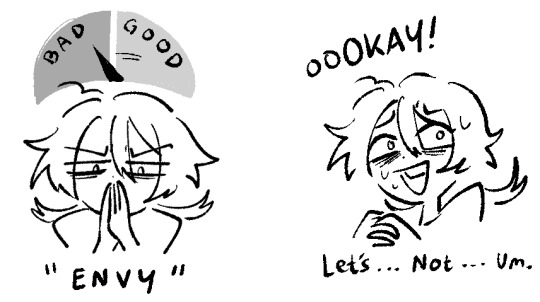
Ok, take this. You're welcome
For those who want inspiration from my art style. ::")
No, this is not a tutorial but some key points from my style you can try and practice to explore yours!
PS. I am not a professional artist, nor an art expert. I still have A LOT to practice/improve, especially since I just got back to drawing. One could say my skills are just average!
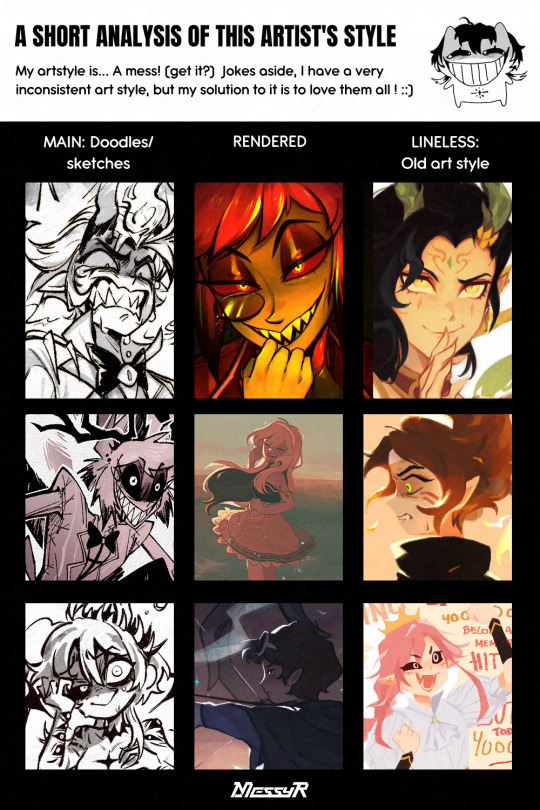
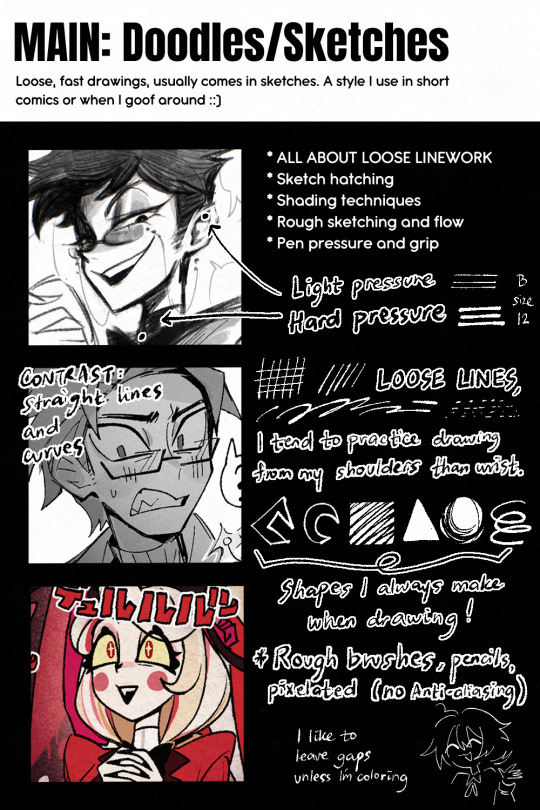
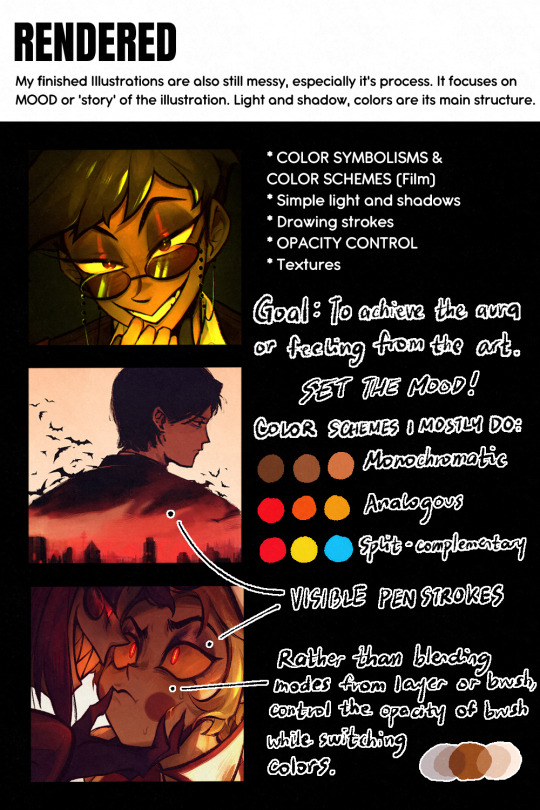
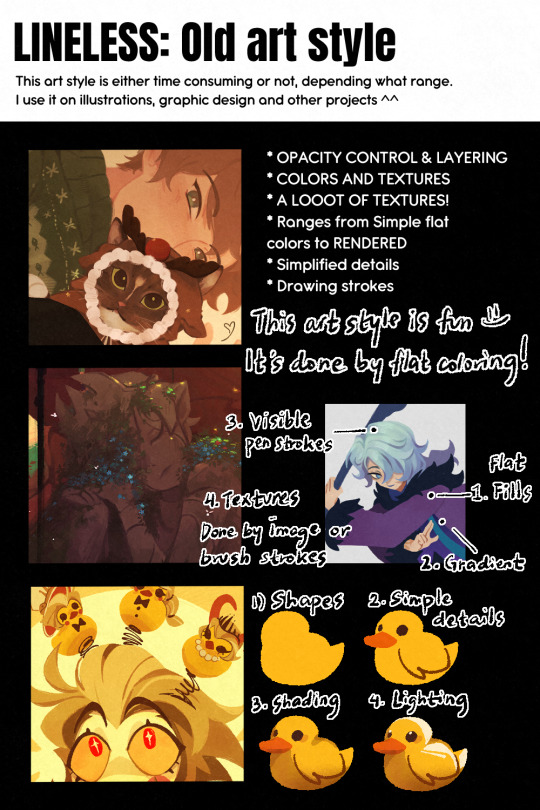
#messyr#I couldve taken animation course for college instead im stuck with multimedia graphics design but lets go i guess#me and that black and white thinking against the world#tho i DO my best to understand whatever there is before i completely judge or interpret something as good or baD IDK ITS SOME BRAIN THING 😭#artists on tumblr#messyr's art guide
468 notes
·
View notes
Text
I don't know who to send this ask so I'm gonna leave it out here for the public because it just came to me out of the blue: locomotive literature
And I don't mean literature about locomotives, but rather literature written by locomotives
Train biographies detailing their lives on the railway and documenting how things have changed since they were first built
Ghost writers publishing literary works written by trains
Trains with human editors sitting on their buffers as they write down what their engines say and making adjustments for those especially picky or who's words cannot be transcribed because they will be banned otherwise (looking at you Duncan)
Just
Train authors you guys
#ttte#thomas the tank engine#thomas and friends#edward would be the perfect children's author I think#telling stories based on the shenanigans of thomas bill and ben#but also him writing about locomotive hardships and the shady practices surrounding their lives#with published accounts by percy henry and anyone else willing to contribute#Henry writing his experience powering through his time as a train that had several 'health' problems#an icon of perseverance and model for those struggling with their own health problems#thomas being cheeky as usual and publishing a book on all the insults he and his friends used against each other#complete with detailed accounts of how those insults came to be#Gordon and his guide to looking one's best and being as dignified as possible#bill and ben co authoring a practical joke book people#do you all see my vision
192 notes
·
View notes
Text
New promo photo of catsuki alongside his hero uncles catshot and catjeanist

And in another one his hero dad also joined them: catmight. they're mentoring him.

#The first Pic they look like a family😭 with them standing each side of him protecting him#and the second Pic it's so “mentors guiding the student”#THEY'RE SO ADORABLE STOP#shut up because Katsuki's relationship w his mentors are so dear to me#anyway edgeshot's design look so good here#bakugou katsuki#katsuki bakugou#Bakugo Katsuki#Katsuki Bakugo#best jeanist#Edgeshot#shinya kamihara#tsunagu hakamada#mha#bnha#my hero academia#Katsuki merch#All might#yagi toshinori#Katsuki and his mentors#dad might
65 notes
·
View notes
Text
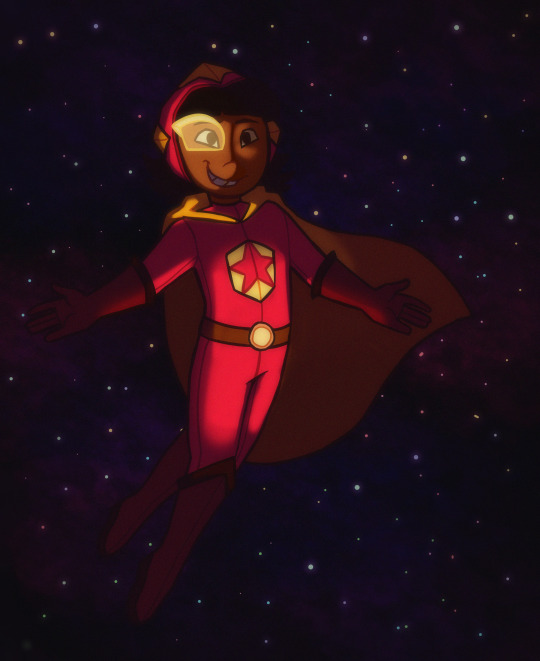
some new drawings
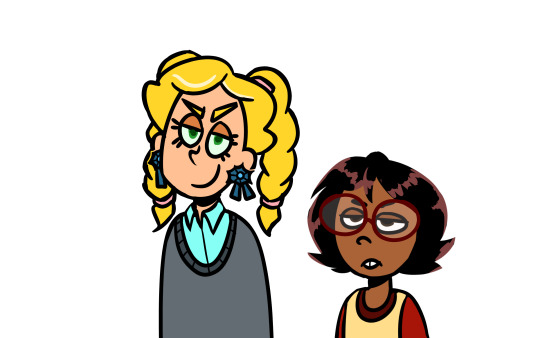
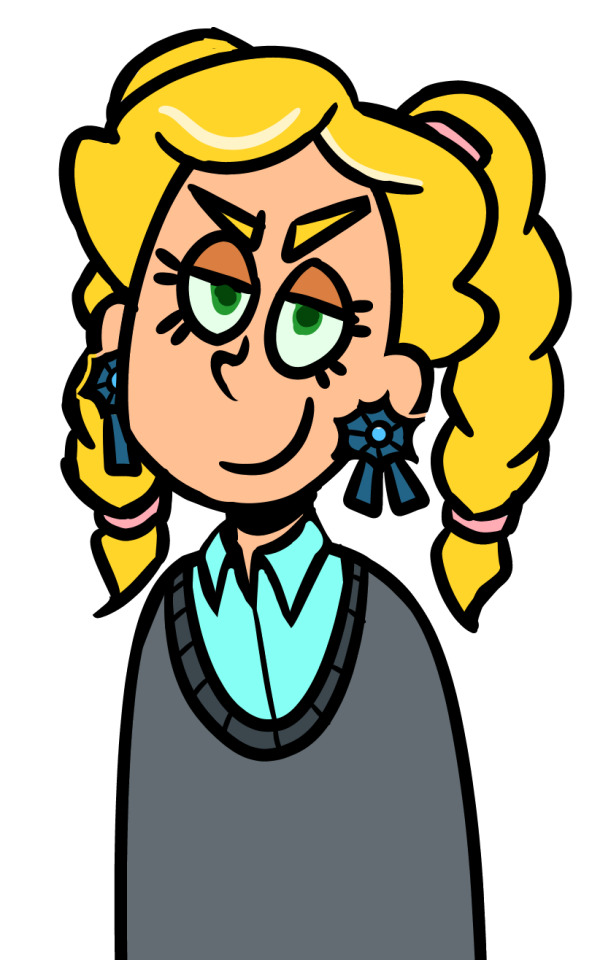
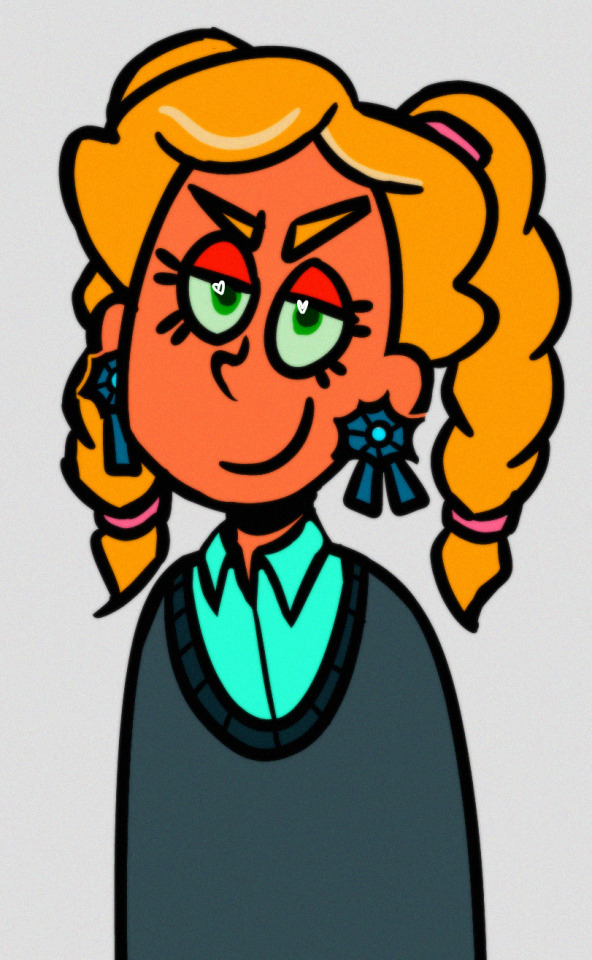
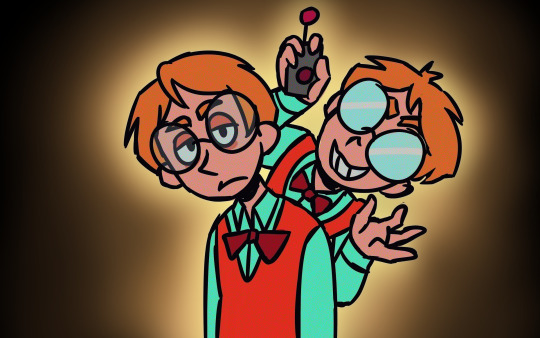
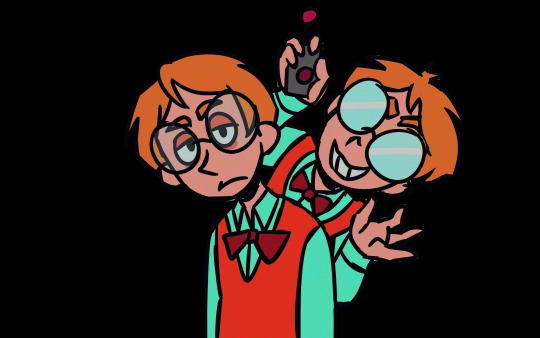
wip and the original versions of the first drawing undercut
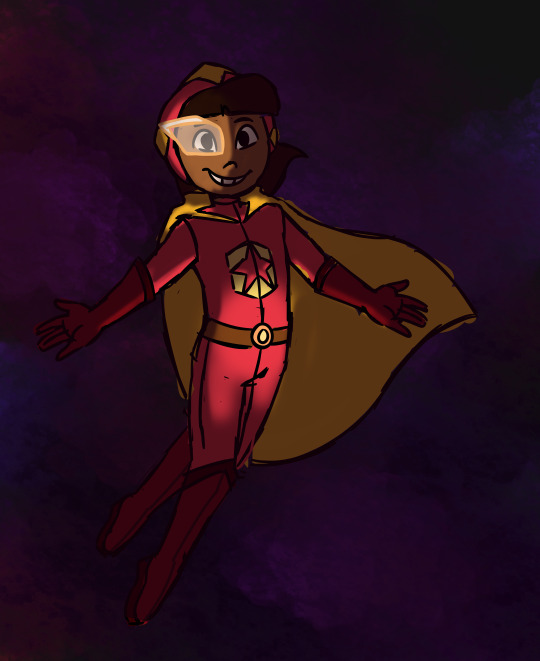
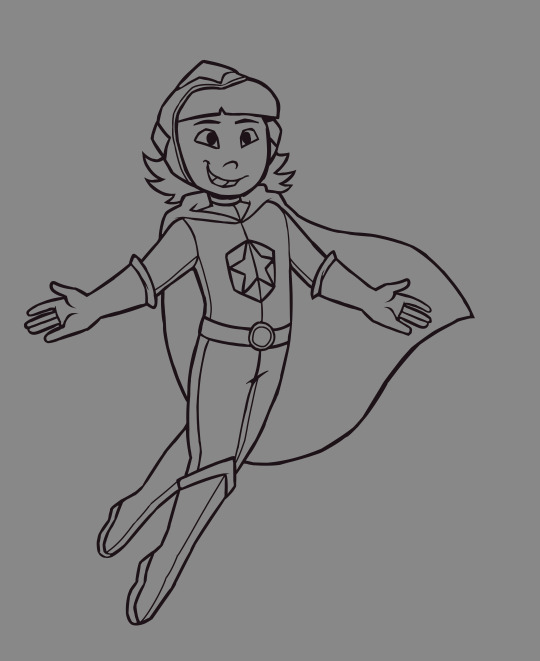
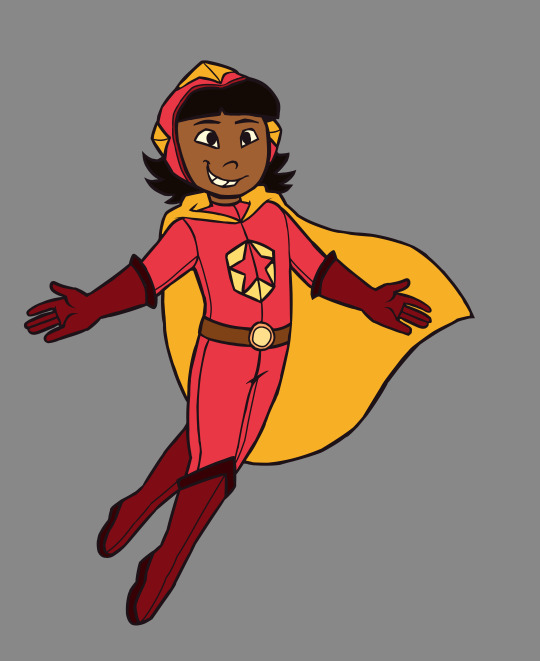
yeah the first drawing was based off of these two drawings:
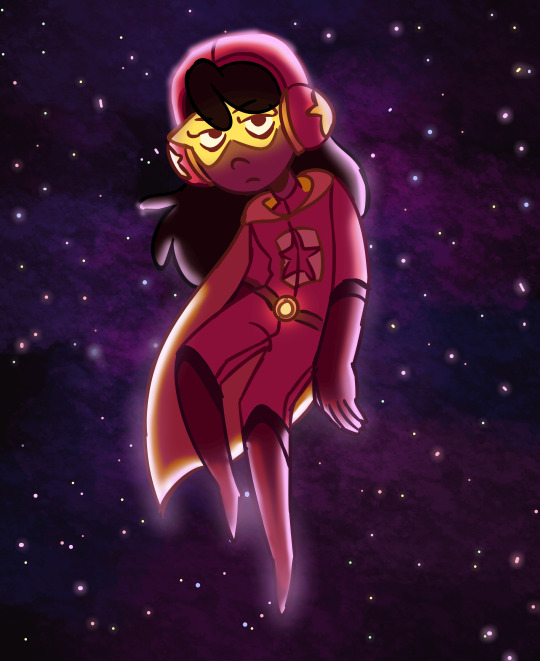
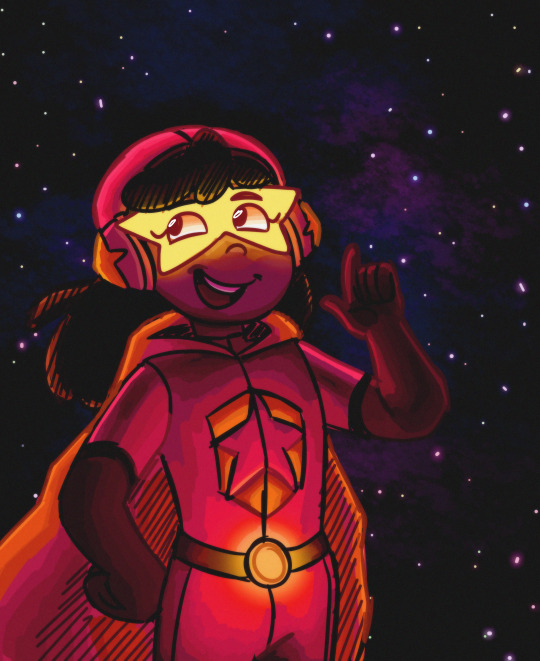
#wordgirl#word girl#wordgirl pbs#wordgirl fanart#wordgirl oc#anthonym#anthony azura#becky botsford#tobey mcallister iii#tobey mccallister#wordgirl tobey#victoria best#anthovic#i plan on making a guide on my version of wordgirl's suit some time
121 notes
·
View notes
Text
Dean Winchester of Supernatural fame is NOT reading parenting books he is putting on Cheaper By The Dozen, Daddy Daycare and Honey I Shrunk The Kids taking notes.
#i woulda said full house but dean's more a movie guy than a tv guy#it doesn't help. btw. lol.#if dean read a gentle parenting guide he would scoff and roll his eyes and throw it across the room#and eventually start silently weeping if he was convinced to keep going bc HE was a kid and HE didn't get treated with respect or gentlenes#dean in an argument with those mommy bloggers he follows saying something like 'please. i was left in a motel room with my brother#from like age 7 upwards I think little Timmy will be okay in the car by himself for 3 minutes 🙄“#and someone hits him with 'I'm so sorry that happened to you' and he tries to brush it off all day and complain about it to Sam#and Sam's like. yeah it was kinda fucked up though. and Dean's like WELL I KNOW THAT BUT HE WAS DOING HIS BEST#(not fully believing it bc he certainly can't picture leaving a 7 year old alone in the world they live in no matter what)#(and Dean's never fully actually agreed with their dad but he feels attacked by Sam's agreeing)#(but old habits run deep)#cawis creates
355 notes
·
View notes
Text

Grady Hendrix (My Best Friend’s Exorcism, The Southern Book Club's Guide to Slaying Vampires) will publish Witchcraft for Wayward Girls on January 14 via Berkley.
The 432-page horror novel is described as "Rosemary’s Baby set in a home for unwed mothers in 1970." It will be available in hardcover, large print paperback, e-book, and audio book.
Set in Florida in 1970, Grady Hendrix’s newest novel follows a group of young women in a home for unwed mothers who find a guide to witchcraft.
Pre-order Witchcraft for Wayward Girls by Grady Hendrix.
#grady hendrix#Witchcraft for Wayward Girls#the southern book club’s guide to slaying vampires#my best friend's exorcism#how to sell a haunted house#book#gift#horror books#horror novel#the final girl support group#horrorstor#stephen king#rosemary's baby#rosemarys baby
165 notes
·
View notes
Text
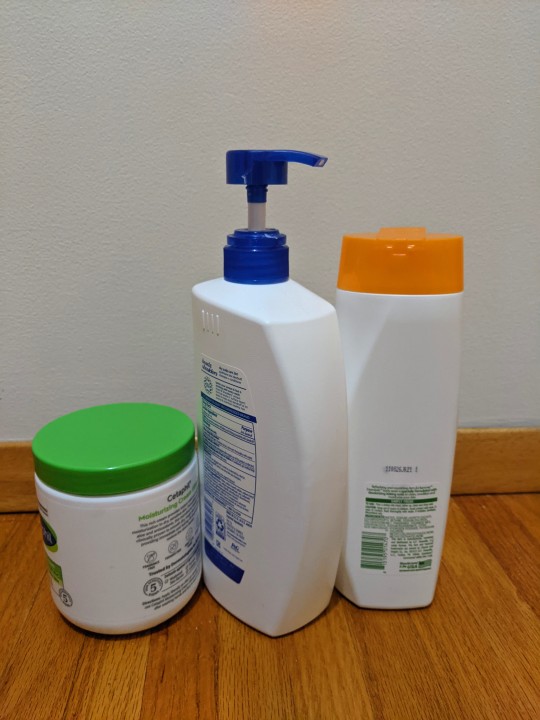
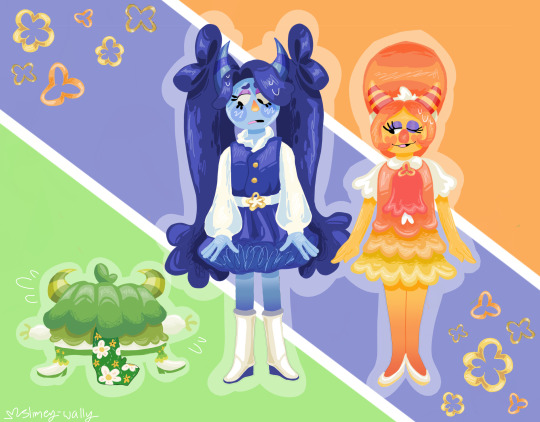
Attempting to be humorous while I'm sick is hard
Unless this made you smile or laugh or something-
Then YAY!!! MISSION ACCOMPLISHED!!🎉🙏
#welcome home fanart#welcome home#franny joyful#bea joyful#jonesy joyful#welcome home franny#Welcome home bea#welcome home jonesy#I just found the blue bottle first#Then the orange one#And then I searched for a green one#I couldn't find a green bottle#So#Ye 🙌💕#Also#Mini story time 🗣️#So I was chilling and eating mint ice cream and junk#When I spot a spider on my ceiling#I have a fear of spiders btw#Also I'm short#So I wasn't in the best position at that point#I grabbed my phone and used the sunlight that came from a near by window-#Reflected the light off my phone screen#And used it as a light Lazer beam thing to guide the spider towards my deck door#I was by myself))#So I looked like a total idiot 😭#It didn't work#And the moment I blinked it was gone#I'm still very cautious around my house 🥲
166 notes
·
View notes
Note
you are criminally underrated. *holds out hands like a sad victorian child* any tips for a young artist? :)
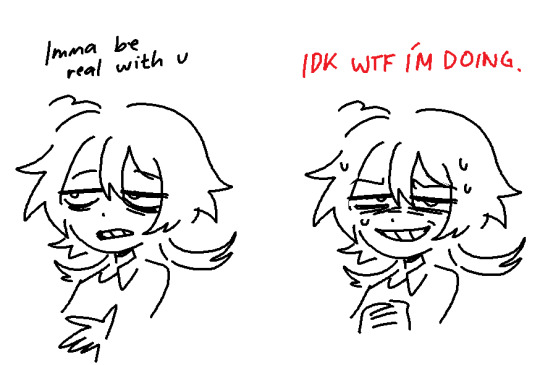
im a very. tired. artist.
To aspiring artists, I'm not sure what 'tips' or advice I can give that were not already said by another. However, I'll remind you anyway.
"There's no secret to art... just begin and keep going. That's all we can do."
Always set your pace, and take your time learning. Art is something that isn't rushed, rather it grows through experience. Think of it like exp points or something, the more you gain, the more you know and skills acquired. It doesn't mean you HAVE to abide by the principles or rules either, though it's best to know them. Knowledge comes in different ways and your method is yours to explore.
As for motivation, it's something you'd find attached to, a mission and values thing per se. Find your dedication, how will you strive, how much are you willing to pursue. What keeps you going? What WILL keep you determined?
We take criticism critically: Don't get your ego attached to every work, everyone has their own perspective. What I mean to say is to understand errors and find improvement. Be HONEST with yourself and your work. Nothing is ever wrong in art, hell- even the most fucked-up ones can look so beautiful and meaningful.
In social media or sharing artworks, it's cool to show them to your friends or relevant platforms your craft would be in, just gotta learn the long process of algorithm somehow... It's a pain, but never lose confidence! Believe in yourself. Even the tiniest of work, effort is counted as special. Because it's from you!
Lastly, enjoy what you do! Have fun once in a while, and best that you find fun all the time in your crafts! You create for a cause and not just to please. Art shouldn't be a cause to break you, rather it builds you.
I hope this message is enough? ::)
I've been drawing since I was young, now as an adult- my art is meh compared to other artists out there, but I still try my best to keep my mark around.
So much has happened in my life and I'm still VERY lost, especially in a path as an 'Artist'. Though, I fell off in art, burned out, and relapsed more than I can count,
nothing or no one can kill the part of me that just wants the world to see that I can still... Create.
#messyr#I tend to fall off on media most of the time so...#i dont really care about much about my reputation so idc much about relevancy- i just like to create things.#pain is my motivation as edgy it may sound#but it's where i strive best and where im from lmaoooo#messyr's art guide
273 notes
·
View notes